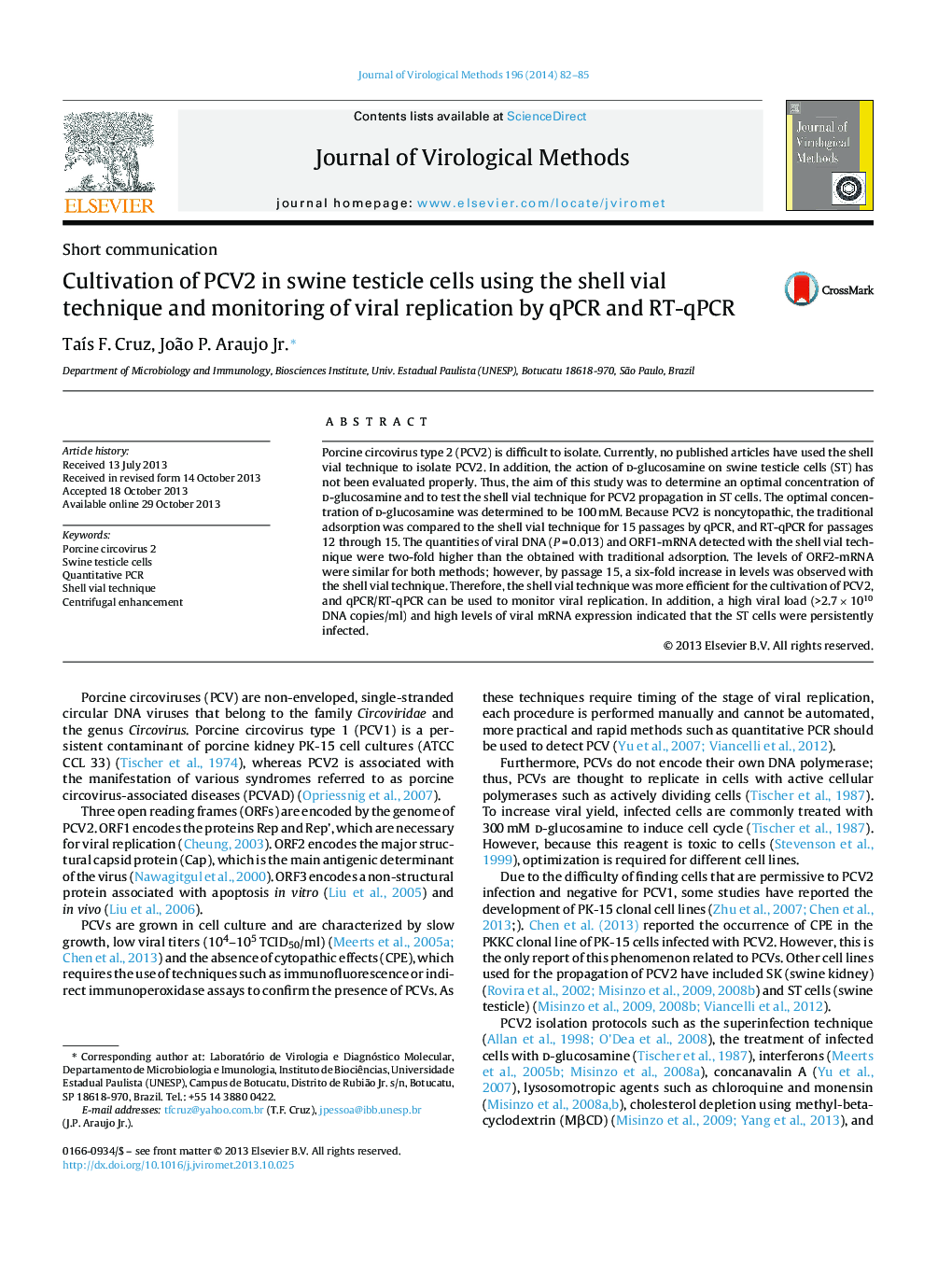| Article ID | Journal | Published Year | Pages | File Type |
|---|---|---|---|---|
| 6133886 | Journal of Virological Methods | 2014 | 4 Pages |
Abstract
Porcine circovirus type 2 (PCV2) is difficult to isolate. Currently, no published articles have used the shell vial technique to isolate PCV2. In addition, the action of d-glucosamine on swine testicle cells (ST) has not been evaluated properly. Thus, the aim of this study was to determine an optimal concentration of d-glucosamine and to test the shell vial technique for PCV2 propagation in ST cells. The optimal concentration of d-glucosamine was determined to be 100Â mM. Because PCV2 is noncytopathic, the traditional adsorption was compared to the shell vial technique for 15 passages by qPCR, and RT-qPCR for passages 12 through 15. The quantities of viral DNA (PÂ =Â 0.013) and ORF1-mRNA detected with the shell vial technique were two-fold higher than the obtained with traditional adsorption. The levels of ORF2-mRNA were similar for both methods; however, by passage 15, a six-fold increase in levels was observed with the shell vial technique. Therefore, the shell vial technique was more efficient for the cultivation of PCV2, and qPCR/RT-qPCR can be used to monitor viral replication. In addition, a high viral load (>2.7Â ÃÂ 1010 DNA copies/ml) and high levels of viral mRNA expression indicated that the ST cells were persistently infected.
Keywords
Related Topics
Life Sciences
Immunology and Microbiology
Virology
Authors
TaÃs F. Cruz, João P. Jr.,
